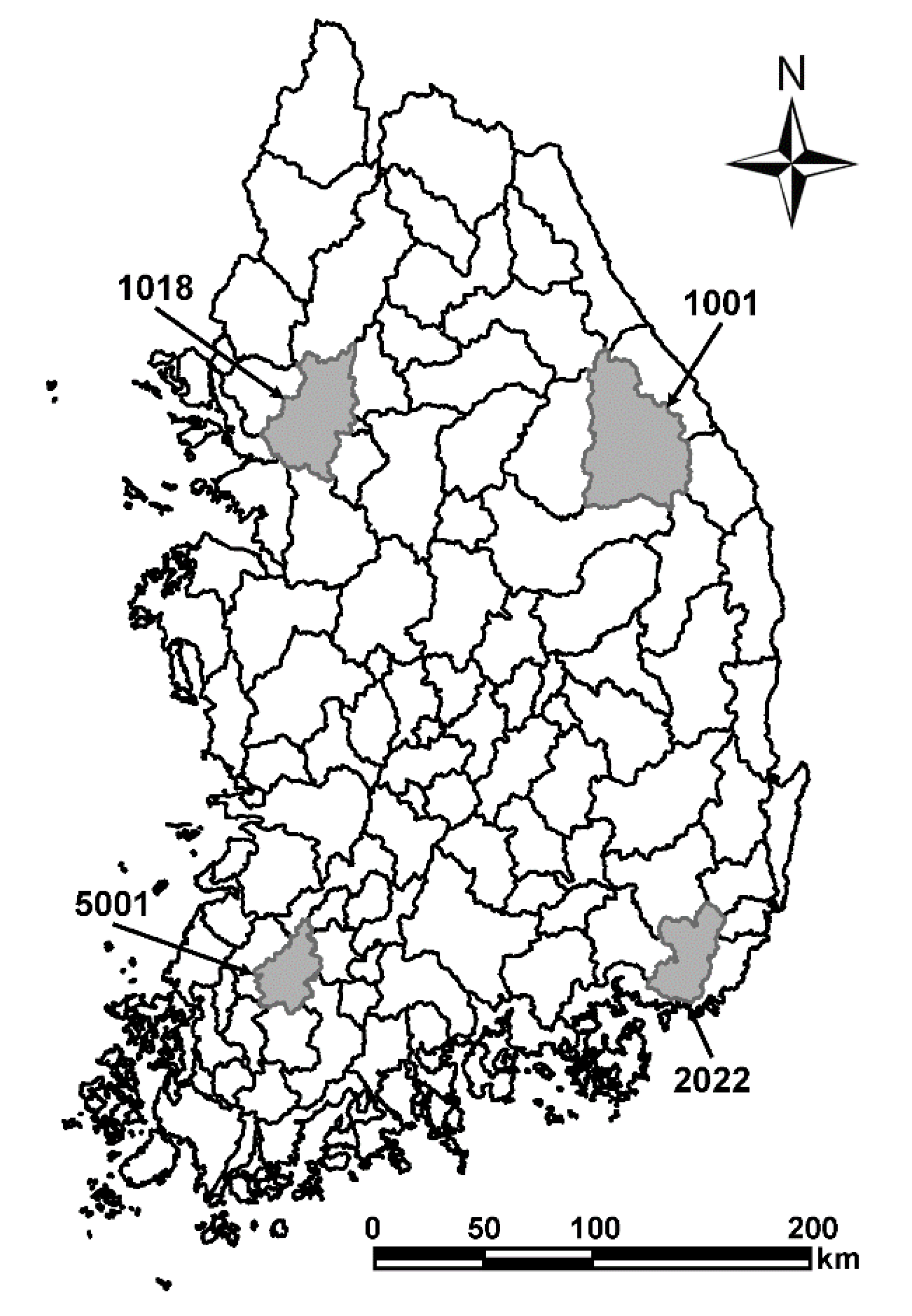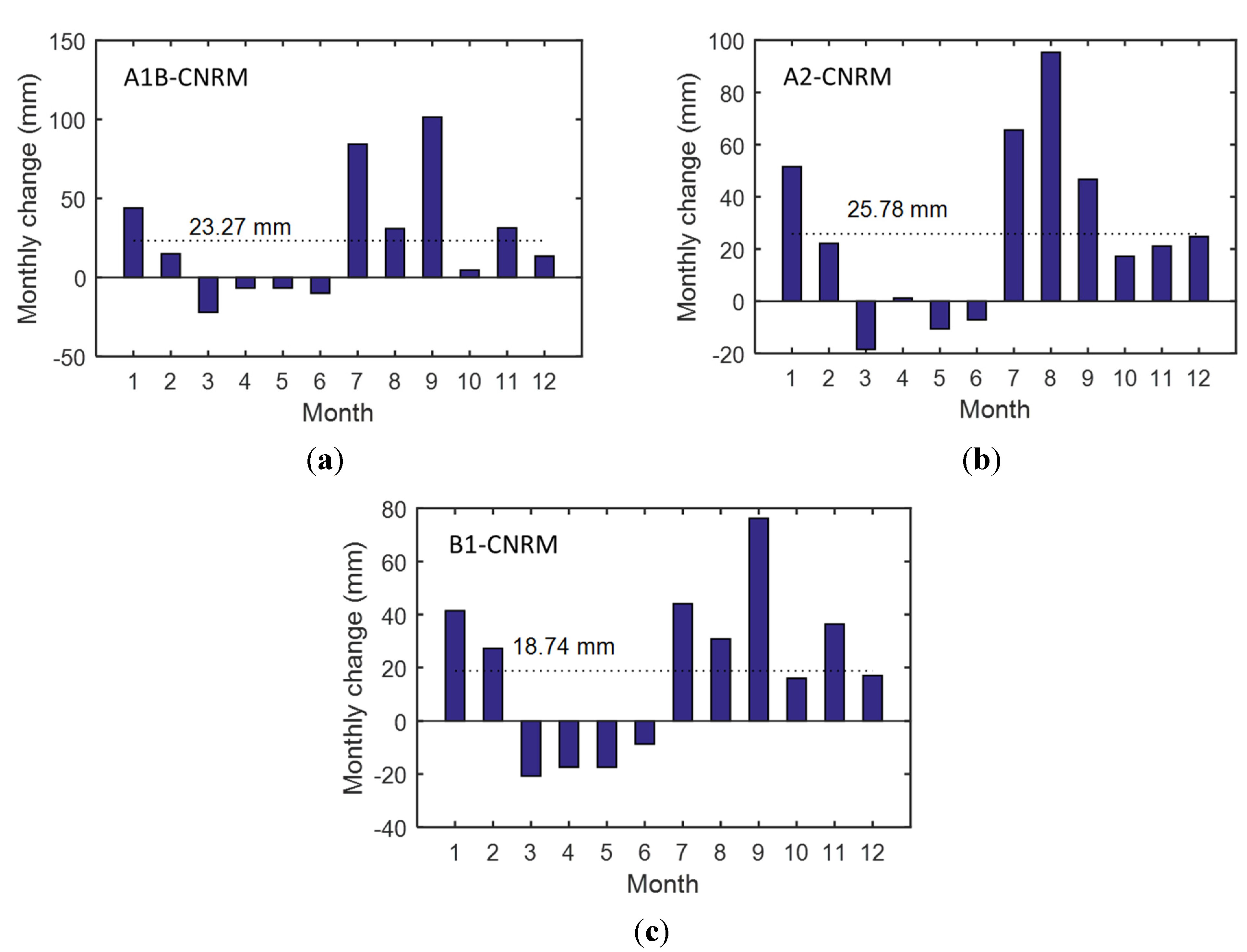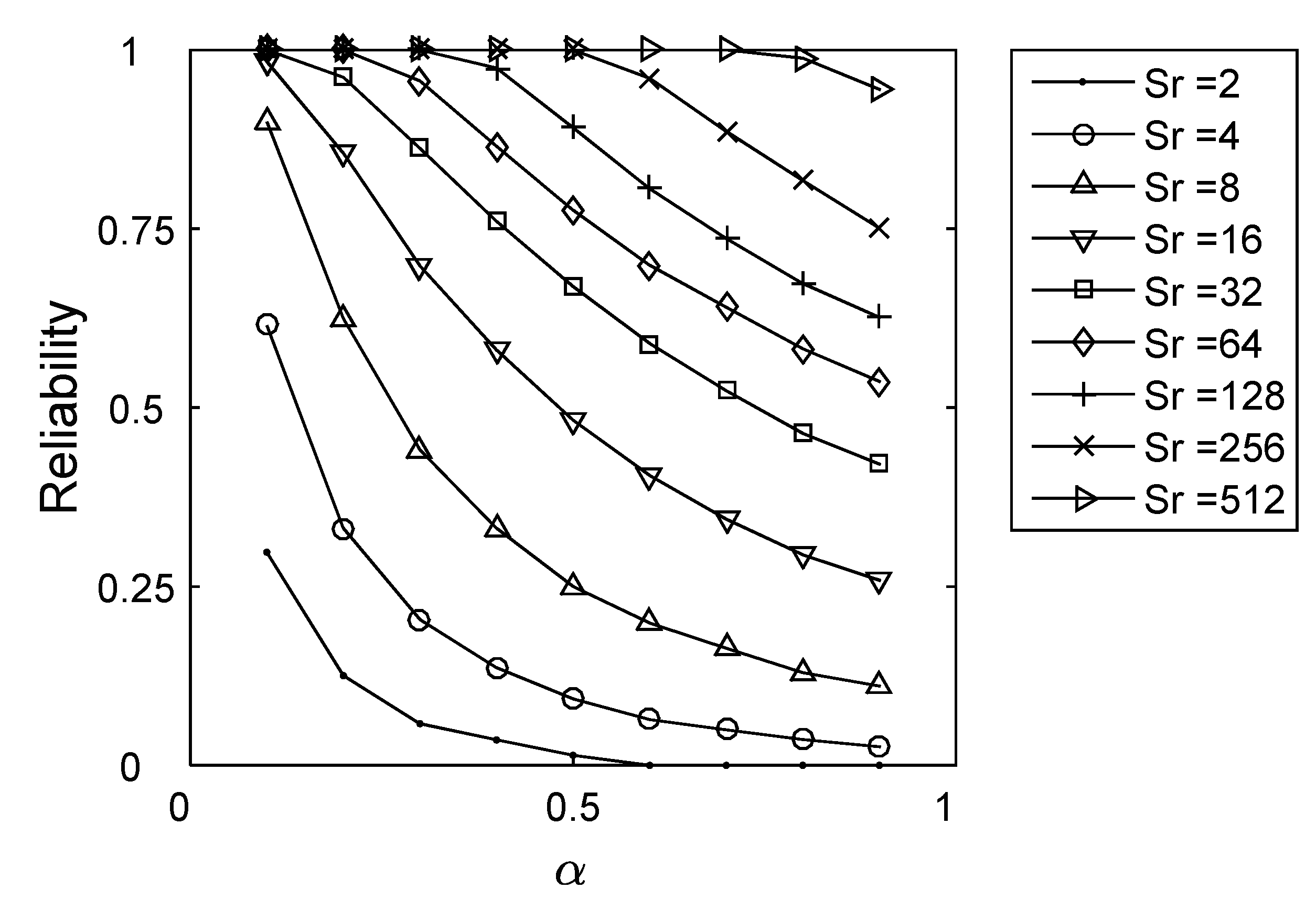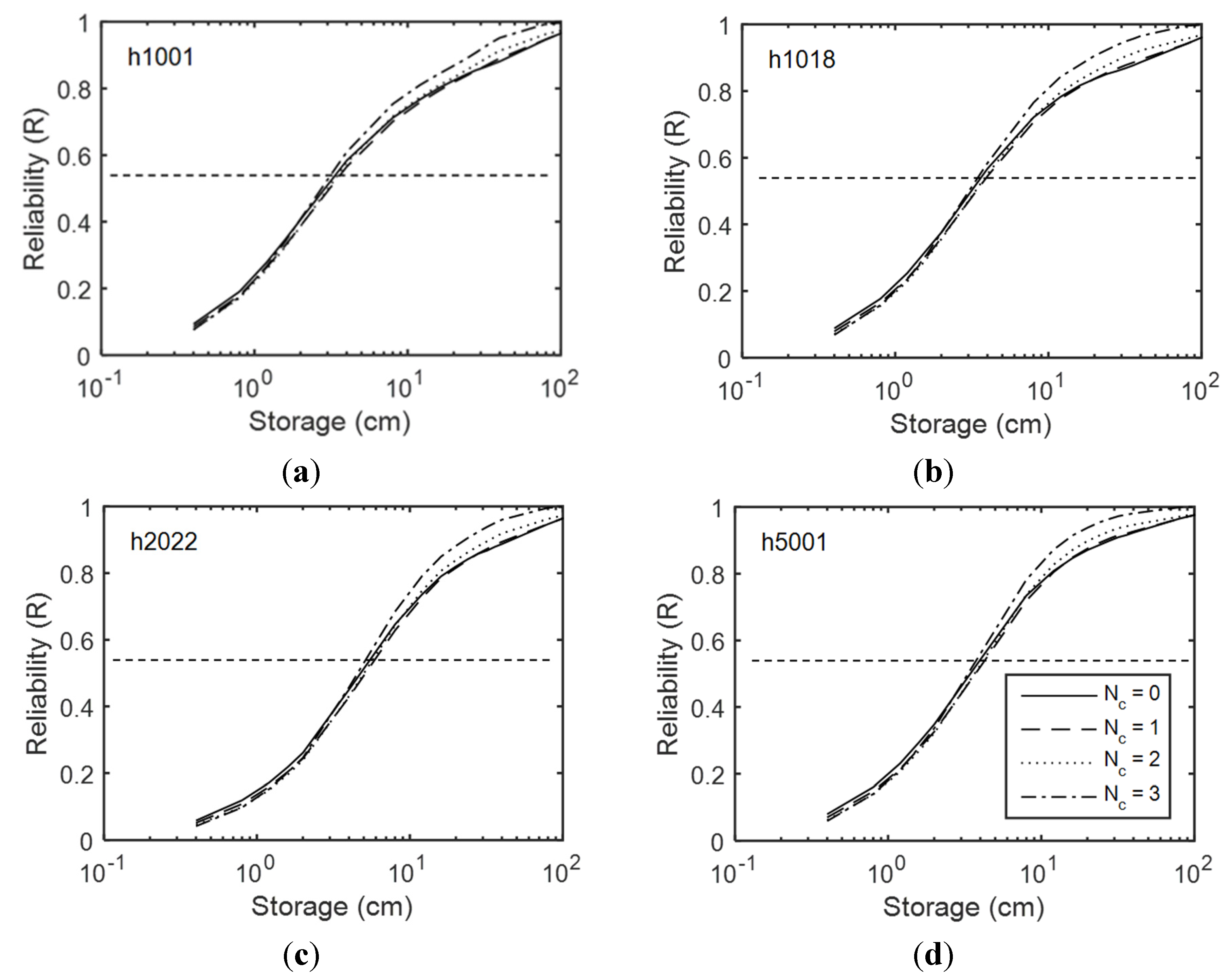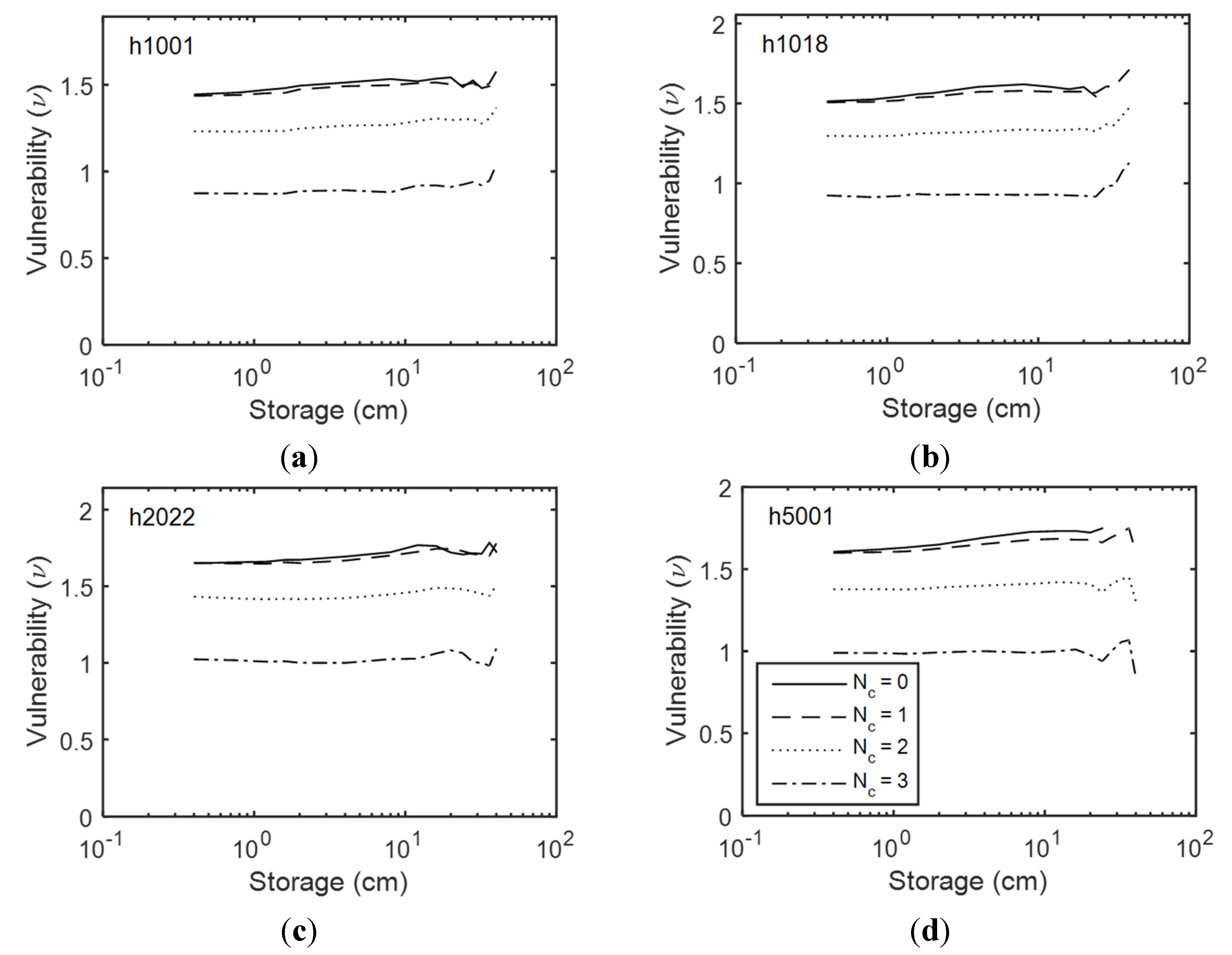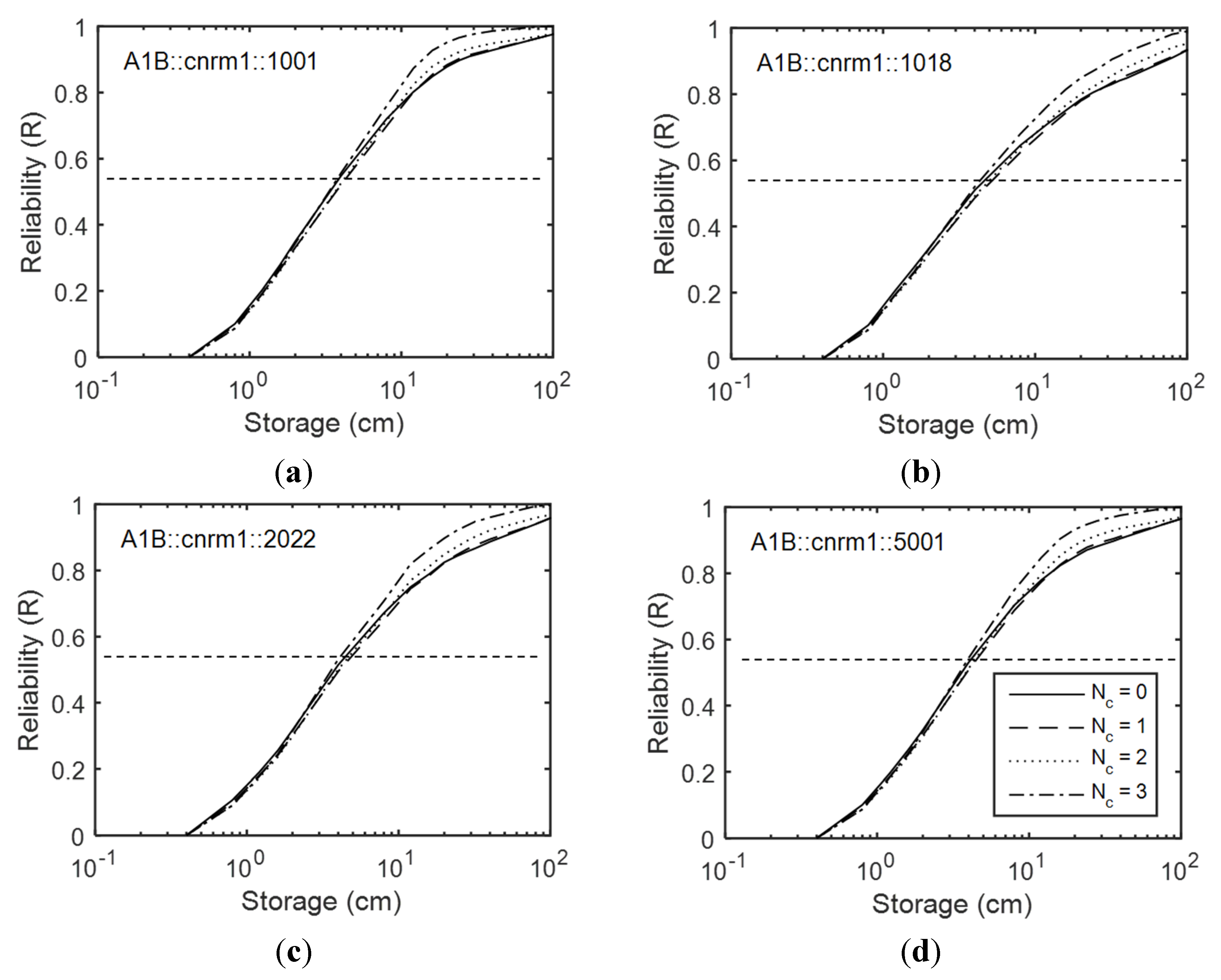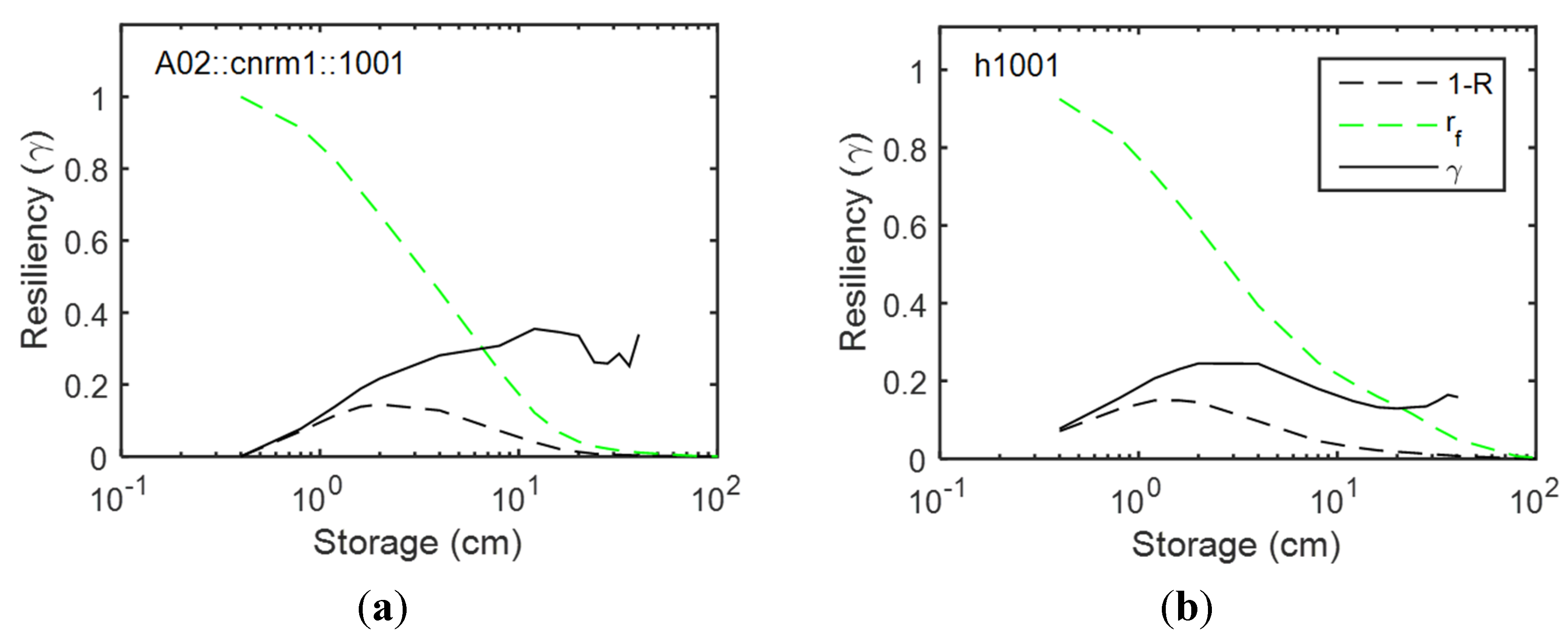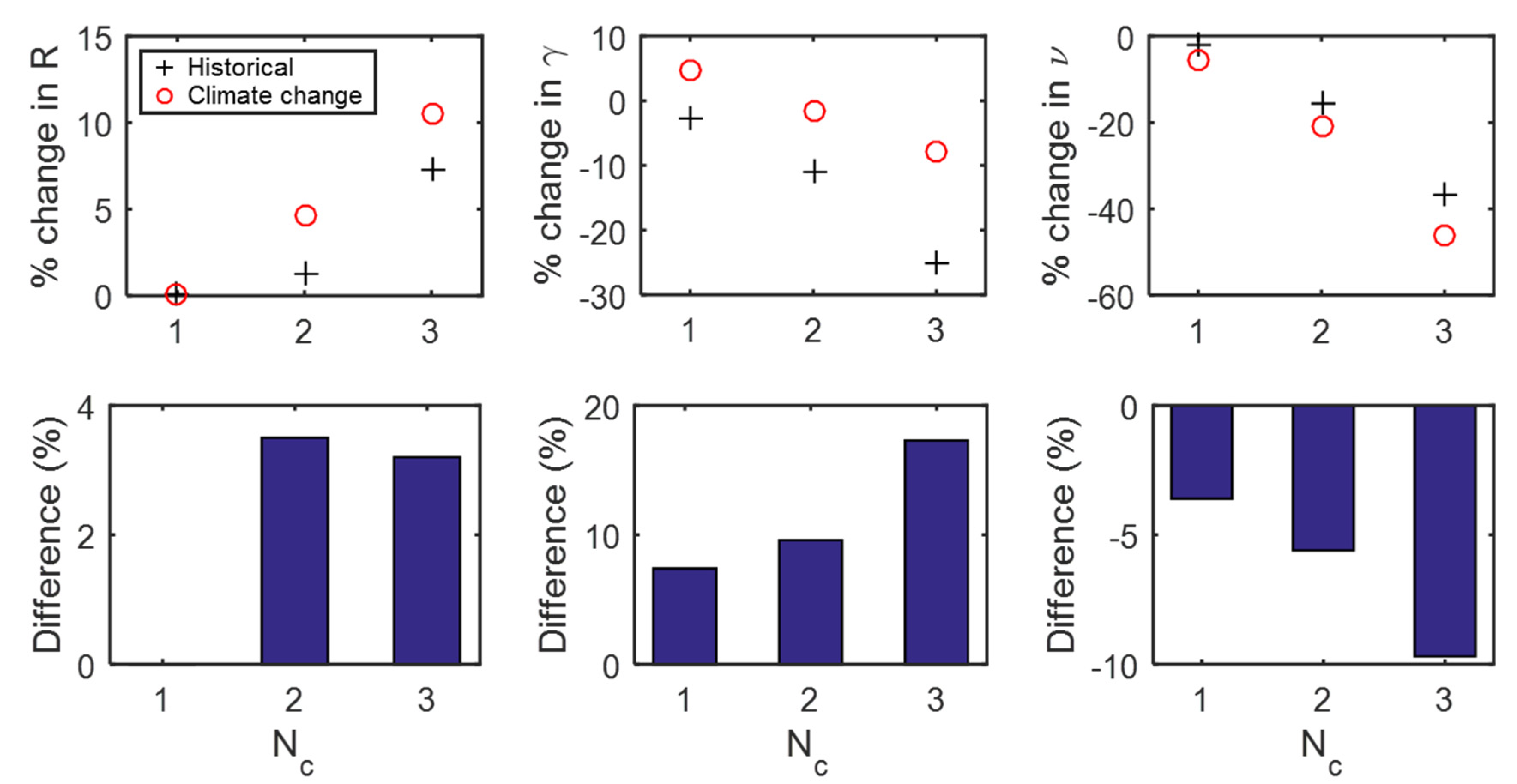1. Introduction
A rainwater harvesting system (RWHS) is defined as the gathering and storage of water running off surfaces onto which rain has directly fallen [
1] using cisterns, rain barrels, and other forms of collecting systems. The benefit of RWHS can be summarized as follows [
2]. First, it covers the peaks in demand that are greater than the flow of the water source. Therefore, it helps smooth out the variations in water supply and sustainable water resources management. Second, RWHS provides water security in cases of supply interruptions or disasters. In addition, it provides harvested rainwater for household water use, a source of chemically untreated water, reducing peak flows in urban catchments, thermal storage, freeze protection,
etc. A RWHS typically consists of natural landforms and artificial facilities that store rainwater in the hydrologic cycle [
3]. Therefore, RWHSs have been facilitated for a range of purposes in many countries. For example, RWHSs were built for potable use [
4,
5,
6,
7], household irrigation, and other uses [
3,
8,
9], and for agricultural irrigation in both urban and agricultural areas [
10,
11]. RWHSs are also used widely as a practical approach for sustainable water resources management, particularly in urban areas [
12,
13].
Previous research on RWHS has focused primarily on the optimal size of rainwater storage using a fundamental mass balance relation [
14] to describe the behavior of a RWHS in terms of the yield after spillage (YAS) and the yield before spillage (YBS) rules. These rules were used to determine the size of a rainwater storage vessel [
11,
15]. The concept of RWHS is similar to that of stormwater basins or reservoir systems, and various methodologies have been applied to estimate the size of the rainwater storage. An analytical equation for storm-water detention [
16], a common storage-reliability-yield (SRY) relationship concept [
17], or a dimensionless methodology [
18] were also used to determine the optimal size of a rainwater storage. On the other hand, a regional assessment of the performance of a RWHS has been conducted continuously to understand how societal and climatic factors interact to affect the behavior of a RWHS [
19,
20,
21,
22].
The performance of RWHS under climate change conditions is being assessed in various ways. Lash
et al. [
23] developed a tool integrating various sizing approaches under climate change. Palla
et al. [
24] tested the performance of RWHS under various European climate zones and found that the antecedent dry weather period is the main hydrological parameter affecting the performance, whereas the rainfall depth, intensity, and duration showed a weak correlation. Lo
et al. [
25] reported that a residential RWHS with non-potable water use is affected more by climate change than a non-residential RWHS. Youn
et al. [
13] examined the required capacity of an RWHS for a specific deficit rate under climate change and found that the capacity is reduced under climate change conditions. Most studies of the performance of RWHS are limited to a single RWHS and its performance under climate change.
The impact of climate change on water resources depends on both the external dynamics and internal system characteristics [
26]. The external dynamics refers to changes in the volume, the timing, and quality of streamflow and recharge. The internal system characteristics mean how the management of the system evolves, and what adaptations to climate change are implemented. Therefore, the system most vulnerable to climate change will be an uncontrolled system [
27]. The adaptation is referred to as adjustments in ecological, social, or economic systems in response to actual or expected climatic stimuli and their impact [
28]. Indeed, the impact assessment of climate change depends not only on the changes in external forces such as increased monthly variation of precipitation and extended dry seasons but also on the internal system characteristics, which can be improved using so-called adaptation strategies under climate change.
One of the characteristics of RWHS is the possibility of sharing with neighbors. In fact, the accessibility to a RWHS depends on the purpose of water use. For example, it is difficult to share the RWHS with neighbors for the purpose of toilet or laundry use. On the other hand, for irrigation purposes, it is rather easy to share the RWHS with an extra length of hose from the attached tap. If it is possible to recharge a neighbor’s rain tank in the same way, then it can serve all the purposes of water use of a neighbor. The sharing can be promoted and encouraged by social practices and programs. In contrast to previous studies on the reliability of RWHS, this study focused on the possibility of sharing RWHS. Seo
et al. [
29] showed that sharing improves the reliability of the RWHS in a sample community composed of four prospective users’ water tanks. The sharing network can have a range of forms depending on the number of users attending the sharing strategy. The results showed that the size of a RWHS can be reduced with a sharing network for a given reliability and the reduction of tank size is maximized if all four users share their tanks with others. Seo
et al. [
30] examined the impact of climate change on the benefit of sharing rain barrels and reported that the benefit of sharing can be even larger under climate change scenarios in terms of the reliability of the RWHS system.
The performance of a RWHS under climate change should be evaluated carefully from various points of view because it can be affected strongly by the individual characteristics of the demands that compose the rain barrel network [
30,
31]. Seo
et al. [
31] also mentioned that the reliability is not sufficient to analyze the performance of the rain barrel sharing network (RBSN). Typically, a RBSN is considered a reservoir [
17] and similar approaches of reliability have been adapted for performance analysis [
32,
33]. In contrast, there are no reports on the analysis of RBSN under climate change with further performance criteria except for the reliability. Since Seo
et al. [
29] considered the possibility of sharing RWHSs, the basic idea of RBSN has been developed to examine the potential benefits by establishing sharing networks among the individual systems under climate change.
Therefore, this study evaluated a RBSN under climate change with the introduction of additional performance criteria, which quantify the reliability, resiliency, and vulnerability of a system. The behaviors of RBSNs under climate change scenarios were analyzed and compared with those of historical rainfall data. Three scenarios suggested by Intergovernmental Panel on Climate Change (IPCC) [
34] and the precipitation projections of three global circulation models (GCMs) were utilized to examine the performances of four RBSNs. The water demand is assumed to be a random variable to include the uncertainty of individual water uses, as in previous studies [
29,
30].
4. Conclusions
This study proposed three performance criteria in a sample community with four prospective users under historical and plausible climate change conditions. This study showed that the reliability, resiliency, and vulnerability should be evaluated to consider the various impacts of RBSNs. As a result, the benefits from RBSNs in terms of the reliability and vulnerability are strengthened but the negative impacts occur in resiliency under both historical and climate change scenarios. Historical simulation results showed that reliability and vulnerability were improved by up to 7.3% and 36.7%, respectively, whereas climate change scenarios showed that both were improved up to 10.5% and 46.4%, respectively. Historical and climate change simulation (A1B) showed that the resiliency was reduced by up to 25% and 7.7%, respectively. That is, the resiliency should be included when the RBSNs are planned and designed. This also shows that improvements for reliability and vulnerability are more prominent under climate change conditions and the resiliency, which is adversely affected by sharing, becomes less affected under climate change. Furthermore, the heterogeneous users with more different means and variances reduce the improvement due to the introduction of RBSNs for the A1B scenario of all GCMs considered.
The climate change impacts depend on the changes in the external influences, such as increased monthly variations of precipitation and extended dry seasons, as well as the adaptive capacity of the system, which can be improved by adaptation or mitigation strategies for climate change. This study suggests that RBSNs can be a potential adaptation strategy that strengthens the vulnerability and the reliability of the water resources system and reduces the extent of reduced resiliency for the future climate change scenarios. The benefit of RBSNs envisions a new societal strategy for countries where RWHSs are chosen in order to address a number of social, economic, and environmental problems, which might worsen in the future.
